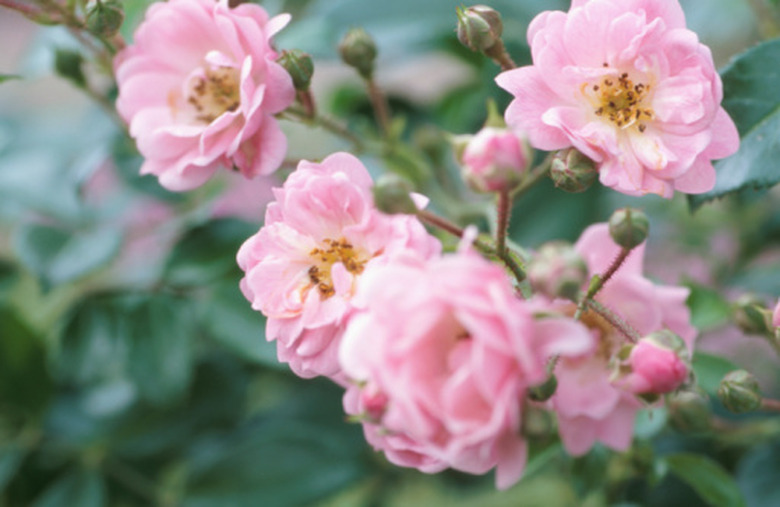How Long Does It Take For Bare Root Roses To Grow?
Bare root roses are young plants sold with the exposed roots wrapped in damp organic material rather than planted in soil. Mail order vendors often sell roses this way, as they are lighter to ship. Often, specimens shipped as bare root plants are also dormant and have not yet begun active spring growth. Shipping dormant, bare root roses reduces the chance that the plants' growth will be hindered by transplant shock. Generally, growth rates vary according to species and variety, but bare root plants take a year or two to catch up to their containerized kin.
Differences
Containerized roses sold in nurseries or garden centers are usually fully leafed out and sometimes even in bloom when they are sold in spring, summer or fall. By contrast, bare root roses are usually sold in the early spring and often arrive without active growth. It takes several weeks after planting for the bare root rose to break dormancy and begin to leaf out. Bloom production begins after that. Bare root roses often produce blooms in the first growing season, but do not begin catching up with container grown specimens until the second year.
- Bare root roses are young plants sold with the exposed roots wrapped in damp organic material rather than planted in soil.
- Bare root roses often produce blooms in the first growing season, but do not begin catching up with container grown specimens until the second year.
The Second Year
In the second year, both container grown and bare root roses have gone through winter dormancy. The bare root rose will probably still be smaller than the container rose, but both specimens will begin to leaf out at approximately the same time, provided they are planted in sufficient sunlight and watered regularly. The bare root rose, with its established root system, will add new growth rapidly and produce more blooms than it did in the first year. By the end of the second season, it may be the same size as the container grown rose.
Speeding the Process
Though bare root roses will generally lag behind container grown specimens in the first year, you can speed the growth process. Bare root roses should always be soaked in a bucket of tepid water for 24 hours after they are unwrapped. Instead of planting in the ground right away, install the bare root specimen in a 5-gallon plastic pot, creating a containerized specimen. The pot will retain heat and moisture efficiently, giving the bare root rose more resources than it would have had if planted in the ground at the outset. Growth will be quicker.
- In the second year, both container grown and bare root roses have gone through winter dormancy.
- The bare root rose, with its established root system, will add new growth rapidly and produce more blooms than it did in the first year.
Considerations
Bare root roses are perfect for those who want unusual varieties that are only available from mail order vendors. They are also often cheaper than container-grown specimens from nurseries, benefiting gardeners on a budget. Containerized roses are ideal for those who want instant — or nearly instant — color and don't want to wait for a bare root rose to break dormancy, leaf out and bloom. Either way, at the end of two years, a bare root rose will probably be indistinguishable from a containerized plant.
References
- University of Illinois Extension: Our Rose Garden — Planting
- "Classic Roses"; Peter Beales; 1997
